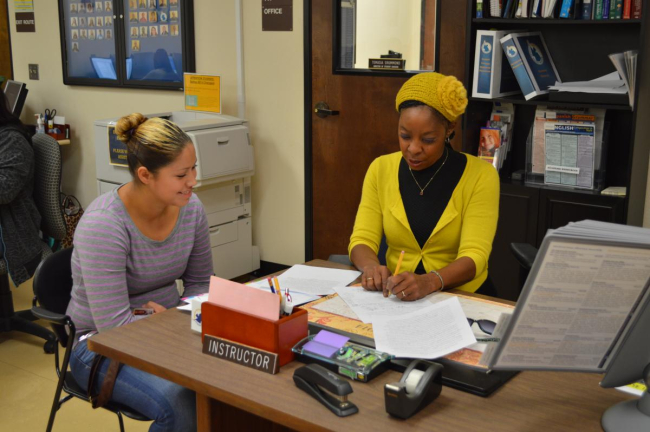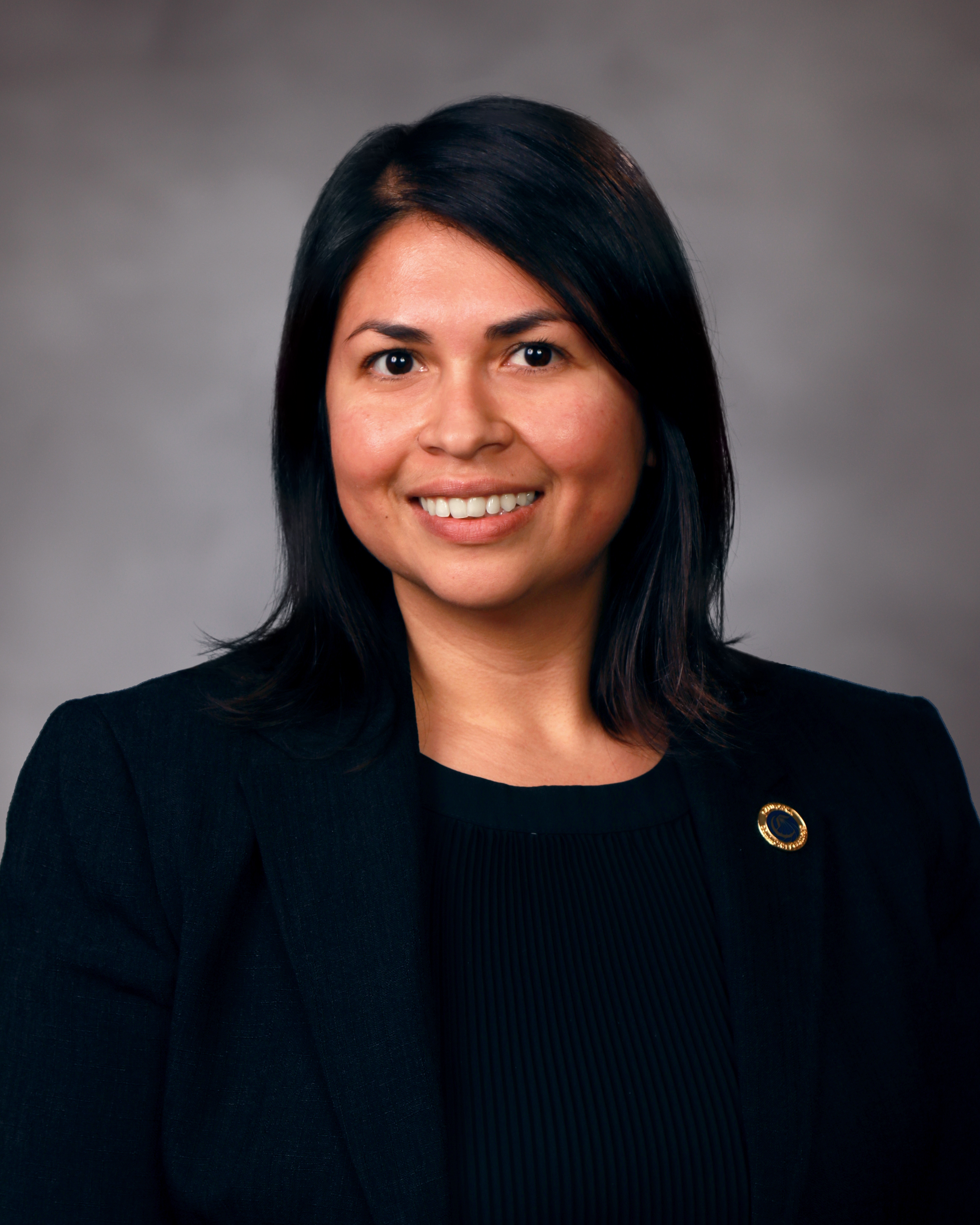You have /5 articles left.
Sign up for a free account or log in.

Community college survey respondents were about twice as likely to have found their most recent internship through an academic adviser or professor than four-year students.
California Community Colleges
Community college students are much less likely than their peers at four-year institutions to report having had any—in-person or virtual—internships during college: 42 percent compared to 64 percent. That’s according to the latest Student Voice survey of 2,116 students, conducted in mid-August by Inside Higher Ed and College Pulse with support from Kaplan.
Is it just that these students haven’t looked at finding opportunities? Not necessarily. As a student from Washington State—one of the 366 community college respondents to the survey—commented, “I am not interested in internships. I have bills to pay and classes to attend. There is no extra time for me to work for free.” 
While the majority of students surveyed did earn pay, and in some cases also college credit, for their most recent internship, that was a lot less likely to happen for community college students, 42 percent of whom were paid or received money and credit. That’s compared to 71 percent of students at four-year institutions who participated in internships.
Some respondents did note the benefits of virtual and hybrid-format internships in landing an opportunity. “It has certainly made it easier!” wrote a student at a California community college. “I love the flexibility and ability to work for places that I would not otherwise be able to work.”
Daisy Gonzales, interim chancellor of the California Community Colleges system, which has 116 colleges and serves more than 1.8 million students, knows what it’s like to overcome barriers to success. A former foster youth, she was among the first in her family to attend college. As deputy chancellor from 2018 to 2022 and acting chancellor during part of that time, Gonzales’s leadership has led to improved outcomes such as more than double the number of students earning transferrable associate degrees.
Inside Higher Ed sought Gonzales’s perspective on the Student Voice survey results and what higher ed and others must do to ensure students can achieve their career dreams.
Q: How well resourced (or not) do community college career centers tend to be, and how does this impact internships and experiential learning opportunities?
A: There is much more work needed to better resource community college career centers. Career centers in our system have historically been focused on career exploration and have traditionally been staffed with limited staffing. New state investments like the Strong Workforce Program create a shift to transition career centers to job-placement centers. Job placement for all pathway programs is a priority of our Vision for Success.
[block:block=176]
Supporting this work are faculty and staff who lead career education programs. They have traditionally integrated career training and job placement within their program design. Intentional investments, and integrating this as required components of the curriculum, are critical at our colleges. Two key examples are in nursing and early childhood education. To support our system to systematically provide access to internships and experiential learning across colleges and programs, the Board of Governors approved an update to the Work Experience Regulations earlier [this] year. With these regulatory changes, we have cemented the first step in ensuring that all students, regardless of discipline, have access to internships and experiential learning opportunities as well as employment opportunities.
Q: First-generation students, and particularly those at community colleges, in our survey were less likely to have had an internship or experiential learning opportunity, and to have had an in-person internship, than respondents in other demographic groups. What do you see as the biggest real and perceived barriers that may be preventing these students from pursuing or accepting internships, at least more traditional in-person ones?
A: First-generation students are more likely to come from lower-income families than non-first-generation students. And many first-generation students not only have the responsibility of covering 100 percent of their cost of education but are also expected to financially support parents, siblings and/or children. As a result, they need flexible and paying work opportunities to support their needs to improve their own financial stability and to care for their families. Therefore, some of the biggest barriers they face in pursuing or accepting internships include:
- Inequitable structures of unpaid internships: unpaid internships only provide further opportunities for those who can afford to take them while leaving those who cannot behind. Given the financial need and other obligations, unpaid internships are not realistic options for most first-generation students.
- Inequitable design of internship and experiential learning opportunities: many of the existing internship opportunities are heavily designed with employers in mind. In turn, this perpetuates the gateway barriers that result in a noninclusive work environment and in financial, administrative and psychological burdens for students. For example, an inflexible schedule or in-person requirement makes the opportunity difficult to accept students who lack financial resources or have to balance work and other obligations. Additionally, without employers’ demonstrated commitment to diversity, equity, inclusion and accessibility (DEIA), students may also feel discouraged from applying to internships because of impostor syndrome.
- Lack of support network development: first-generation students typically have less robust social and professional networks to draw upon when making academic and career decisions. Without proactive and intentional design of the experiential learning opportunities and support services focusing on strengthening students’ support networks, students are unlikely to successfully navigate the current experiential learning environment or compete in the internship application process. Lack of support network also impacts the students’ ability to succeed in the workplace if they experience additional stressors such as insecurity and lack of social engagement.
Over all, it’s important to understand that the biggest barrier themes are time and money. Over 70 percent of our students currently work, so they are having some work-related experiences. These experiences may not be in their field of study, but they are work experiences. For others it is about access to transportation and time.
Most of our students have dependents and other commitments that impede their ability to participate in any unpaid experiences. Supporting (transportation and tech support) and identifying paid work experiences for first-generation students would have a significant impact on their ability to participate in any experiential learning opportunities and enter the workforce permanently.
Q: First-gen community college students are also most likely in our survey to have said their most recent internship did not include pay or earn them college credits. Do you have any sense of how common this is and why a student would accept a role that did not pay or offer credit?
A: Many first-generation community college students have added responsibilities that limit their ability to participate in unpaid experiences, but, at the same time, these students know that they need to build the social professional capital to access future work opportunities. If they are not able to find opportunities that fit their schedule and/or financial needs, they will take advantage in any way they can. This highlights the inequitable structure that disproportionately impacts students who lack robust support networks.
Q: Students at community colleges are more likely than those at four-year schools to rate experiential learning they’ve had as very helpful—86 percent of community college students, 62 percent of four-year students and 65 percent of all students. What might account for this greater satisfaction?
A: Community college students typically come from underrepresented communities. Most students are low income, work full-time or more, have issues with housing and may also be parents and have childcare needs. Because of this, the socioeconomic status of community college students gives them less insight into what occurs in white-collar jobs. They often do not have the family networks that inform them how to access white-collar work or how to enter an industry. Therefore, any opportunity to gain access and/ or better understand a new industry is appreciated.
Q: Community college student respondents are more likely to have had their most recent internship at a small company—58 percent compared to 37 percent of those at four-year institutions. Do you suspect this is because that’s where opportunities were found or because community college students may be seeking a small company environment, or avoiding larger corporations for some reason?
A: California’s community colleges operate in 116 communities and statewide through our fully online college, CalBright. In most communities, small businesses make up the largest percentage of employment opportunities. This is especially true in rural areas.
When it comes to community college students, it is important to remember who they are and what barriers they may need to overcome to succeed. Students with limited transportation are going to seek opportunities close to home to manage their transportation costs. Students who are place-bound to their communities with family obligations will seek to stay local to manage their family commitments.
Q: Community college respondents were about twice as likely to have found their most recent internship through an academic adviser or professor than four-year students, and they were much less likely to have found their internship through a job-search website. Why might that be, and why at the community college level is it so important that various departments collaborate to help ensure students have internship opportunities?
A: It’s important to have collaborative efforts between departments because community college students may need extra help, due to barriers previously discussed, to discover the career path that is right for them, and the work needed to find employment success. Faculty supporting student internships and work experience is an integral part of career education at community colleges. This explains why professors at community colleges are more likely to recommend their students for employment and internship opportunities.
Career and technical education (CTE) programs at colleges are required to have strong employer partnerships to allow students to learn through real-life training from expert instructors and industry professionals. This ensures that curriculum is both current and relevant to current industry needs. This is how a workforce pipeline is built. Many of the program faculty work closely with career centers to advertise internships and support their students as they apply for them. Having employment as an outcome metric also incentivizes faculty to support this work with students.
This also speaks to the importance of faculty’s role in supporting the development and strengthening of students’ support network as well as the value of embedding career mobility support services in teaching and learning. Our Strong Workforce Program is helping our colleges broaden and enhance career exploration and planning, work-based learning opportunities, and other supports for students.
Q: We found that two-year college students are more likely to be interested in a fully remote first job than students at four-year colleges. Why might this be, and what does it mean for community colleges as they support students in preparing them for their next steps, whether that’s at a four-year institution or in the workforce?
A: Community college students are busy. They work full-time, sometimes more, and have family commitments and obligations. Because of this, they need flexibility to continue their dreams of attaining a college education and reaching their full potential. And fully remote opportunities give them just that.
But it is not just about work and family responsibilities—I believe it is also due to accessing transportation. Transportation costs are expensive, and many of our students are place-bound, so if they can access opportunities remotely, they will. Think about it this way—it is cheaper to pay for internet service than for maintenance, fuel and insurance fees that come with owning a car.
In the community colleges, we need to continue to focus on addressing students’ social determinants of educational success, such as transportation, while continuing to support their success in the virtual environment. That means improving access and flexibility to learning by strengthening course accessibility practices, flexible course scheduling, distance education, cross enrollment and other flexible learning modalities. At the heart of this work is the Board of Governors’ work to expand credit for prior learning and competency-based education across our state and ensure on-ramps to certificate and degree pathways for our students.
Q: What do you see as the most important thing that community college educators and administrators can do, or the most important outlook to have, when supporting community college students in finding and succeeding in internships?
A: The most important things we can do as a system boil down to:
- Facilitating the integration of work-based learning opportunities into the curriculum so students do not have to pick between one or the other.
- Making sure wherever possible internships are paid.
- Helping students build their social professional networks and supporting or creating career/job-placement centers that support the student as they embark on their journey for the first time or if they are a returning student looking for promotional opportunities.
- Creating a supportive system/environment that makes them feel like they belong unconditionally. This will create greater and more impactful outcomes for students.
Over all, I believe success will require all of us, within and outside the system, to work together to ensure students have the support and resources they need to find the career of their choice, are successful in achieving their dreams and contributing their full talents to our state throughout their entire career.
More results from the survey on internships and experiential learning, including what students want and are getting from these experiences, can be found here.




